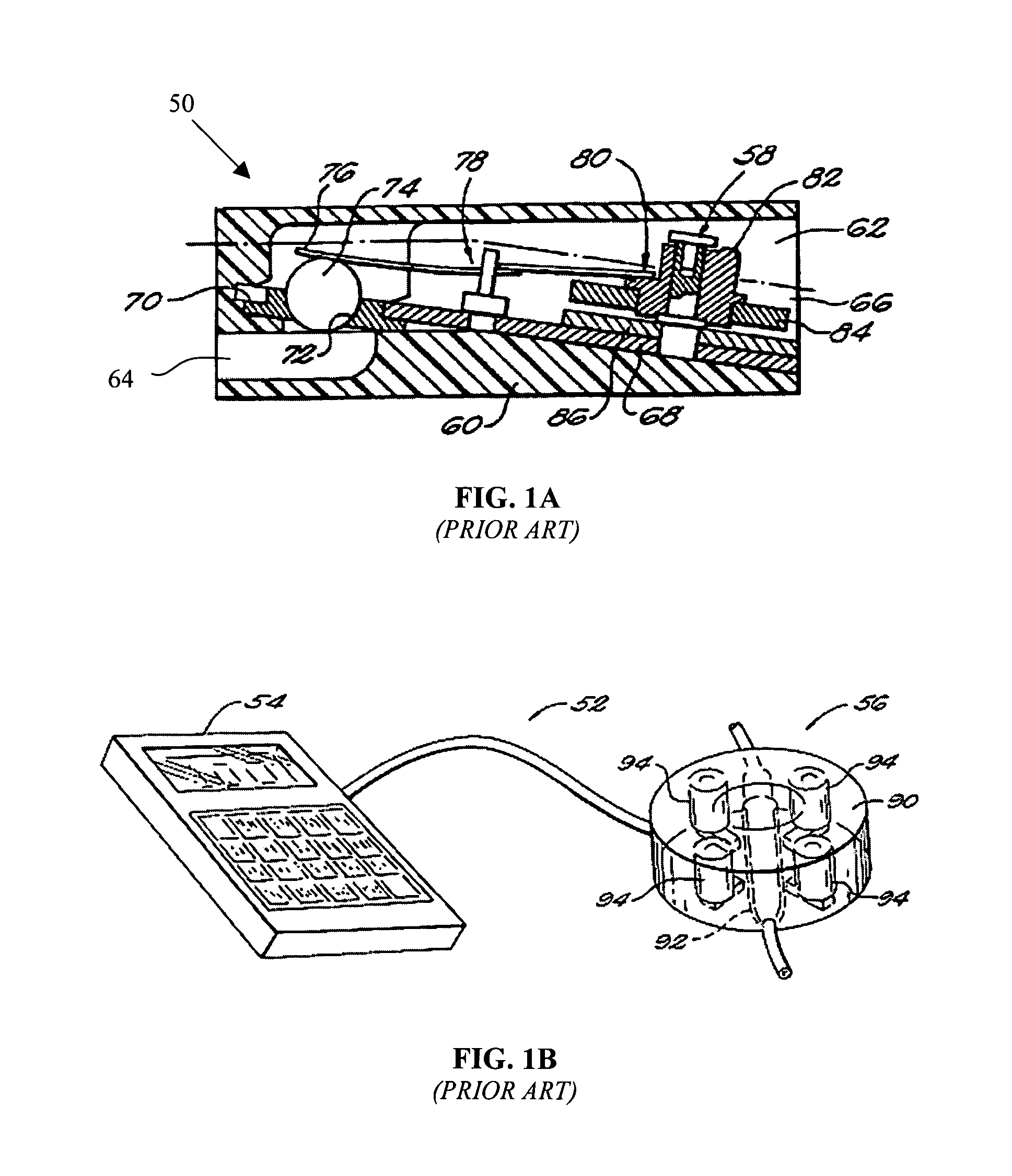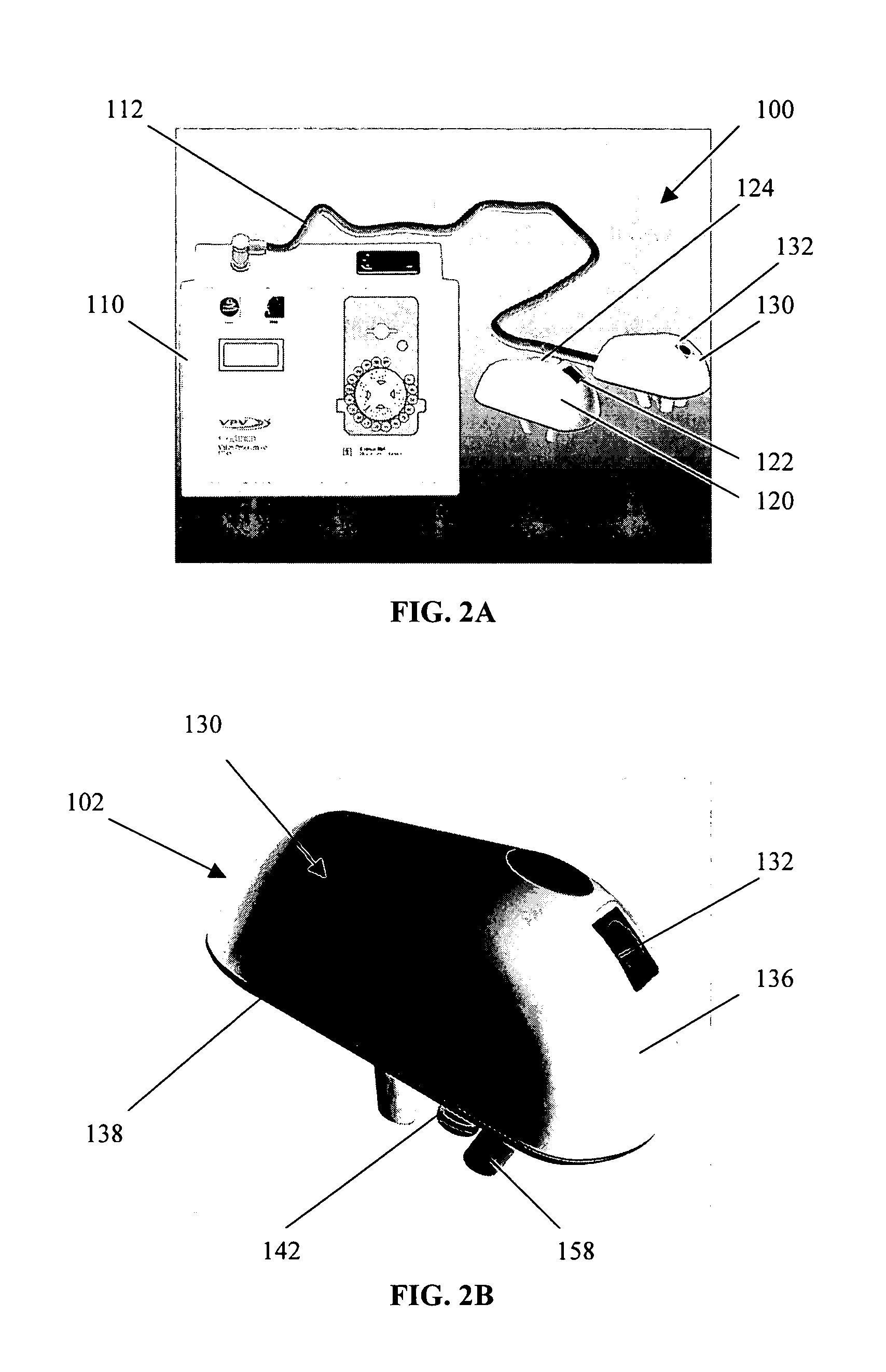Acoustic monitoring system
a monitoring system and acoustic technology, applied in the field of acoustic monitoring systems, can solve the problems of brain tissue compression, abnormally high epidural and intradural pressure, serious medical conditions, etc., and achieve the effect of optimizing the contact between the sensor and the patien
- Summary
- Abstract
- Description
- Claims
- Application Information
AI Technical Summary
Benefits of technology
Problems solved by technology
Method used
Image
Examples
Embodiment Construction
[0037] By way of introduction, FIG. 1A shows a prior art externally programmable shunt valve system 50. The shunt valve 50 is typically surgically implanted under the scalp of a patient. The shunt valve 50 includes a valve body 60 defining a chamber 62 with an inlet opening 64 and an outlet opening 66. When a fluid pressure at the inlet opening exceeds the predetermined threshold, fluid begins to flow through the shunt valve via the inlet and outlet openings 64, 66. A support plate 68 is disposed within the valve body 60 and includes an aperture 70 at one end that is provided with a valve seat 72. A ball 74 is adapted for sealing engagement with the valve seat 72. A first end 76 of a spring 78 biases the ball to the valve seat 72 to prevent fluid flow. The biasing force of the spring 78 is adjustable by varying the vertical position of the spring at a second end 80, which can be adjusted by means of a cam 82. The cam 82 includes a plurality of steps of varying vertical position with...
PUM
 Login to View More
Login to View More Abstract
Description
Claims
Application Information
 Login to View More
Login to View More - R&D
- Intellectual Property
- Life Sciences
- Materials
- Tech Scout
- Unparalleled Data Quality
- Higher Quality Content
- 60% Fewer Hallucinations
Browse by: Latest US Patents, China's latest patents, Technical Efficacy Thesaurus, Application Domain, Technology Topic, Popular Technical Reports.
© 2025 PatSnap. All rights reserved.Legal|Privacy policy|Modern Slavery Act Transparency Statement|Sitemap|About US| Contact US: help@patsnap.com



